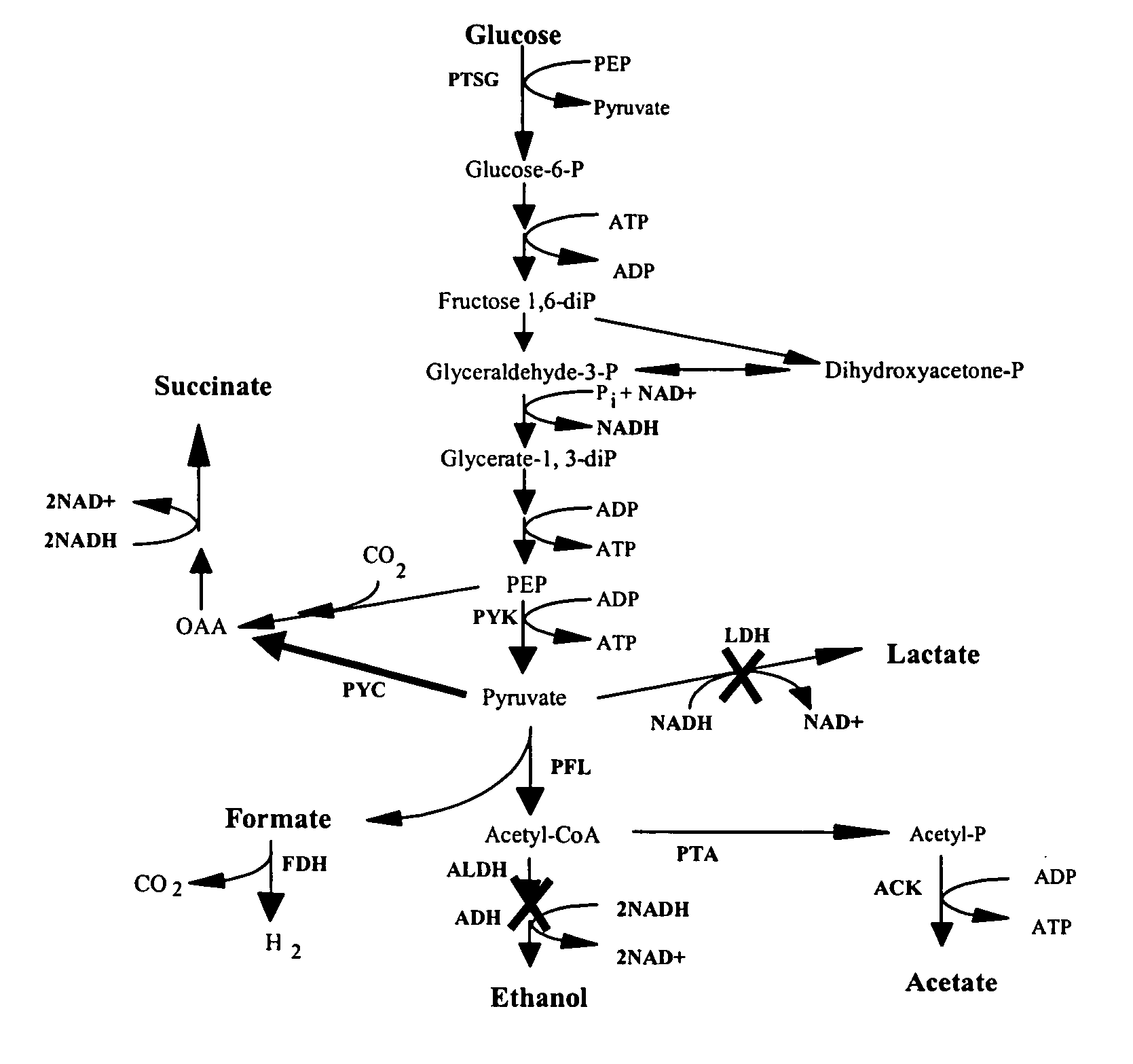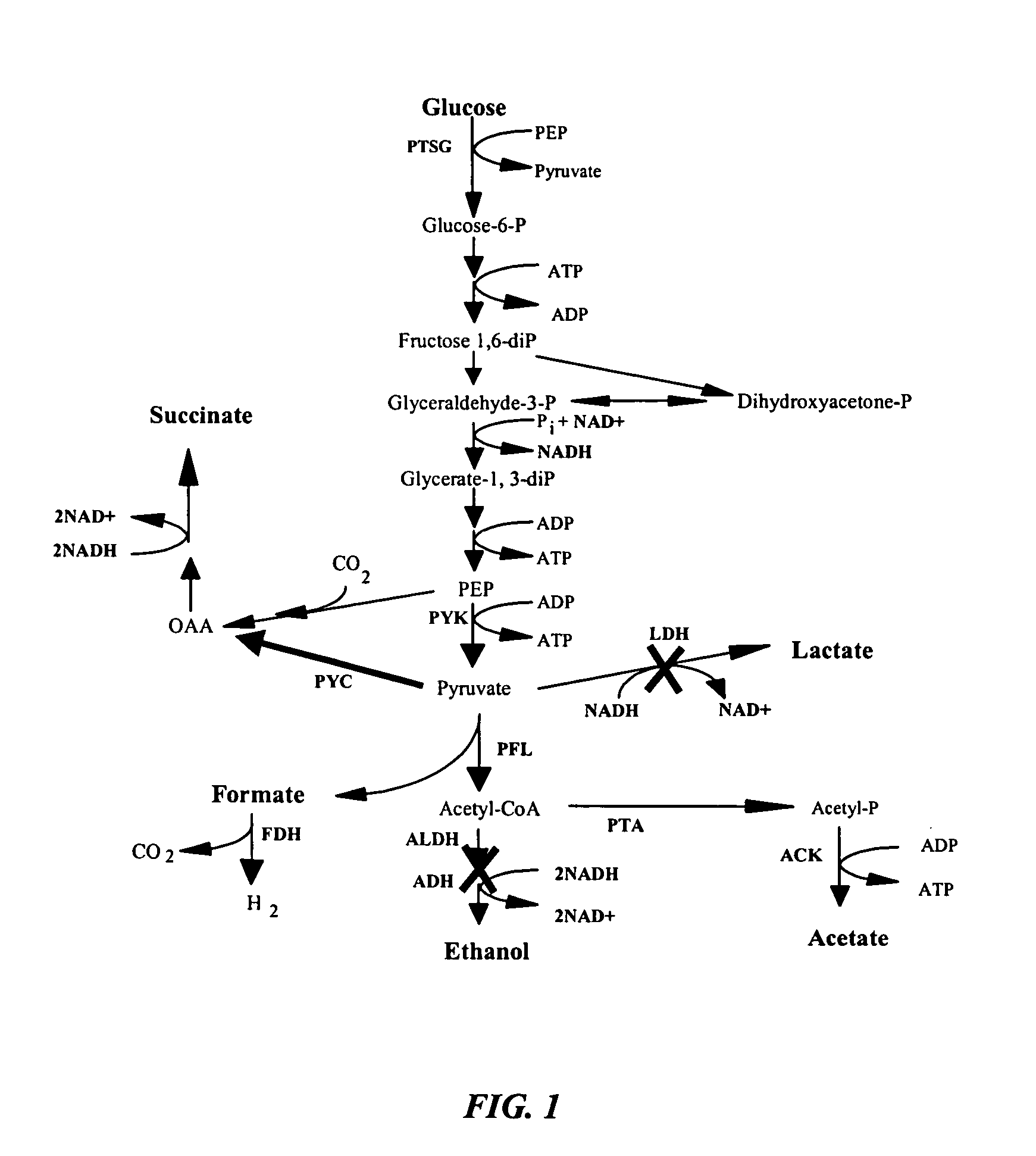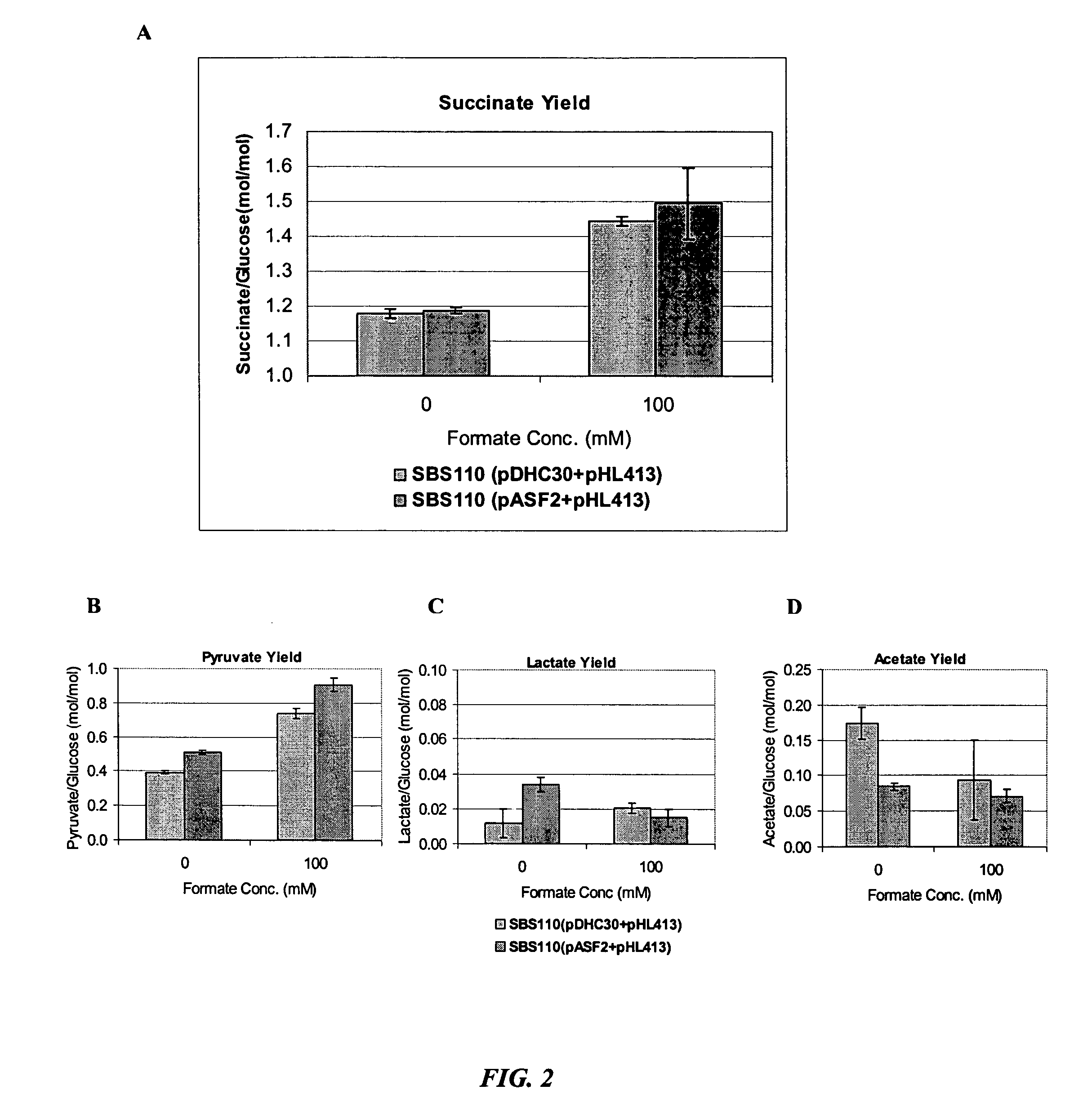High molar succinate yield bacteria by increasing the intracellular NADH availability
a technology of intracellular nadh and high molar yield, applied in the field of increasing the yield of succinate in bacteria, can solve the problems of greater than the theoretical yield of a desired product, and achieve the effects of increasing the yield of succinate, increasing the intracellular level of nadh, and increasing the nadh flux
- Summary
- Abstract
- Description
- Claims
- Application Information
AI Technical Summary
Benefits of technology
Problems solved by technology
Method used
Image
Examples
example 1
Construction of Plasmids and Mutant Strains
[0039] Table 1 describes the strains used in this study and Table 2 describes the plasmids used in this study. Single mutations were performed individually on MG1655 using the λ Red recombinase method of chromosomal disruption. Additional mutations were introduced by P1-phage transduction with subsequent elimination of the kanamycin resistance gene. Single gene disruption sites were verified by PCR. Plasmid pHL413 contains the pyc gene from Lactococcus lactis, which encodes the enzyme pyruvate carboxylase that converts pyruvate to oxaloacetate.
TABLE 1StrainPhenotypeMG1655Wild type (F−λ−)SBS110ΔadhEΔldhASBS110MGΔadhEΔldhA, KmSSBS220MGΔadhEΔldhAΔptsG, KmSSBS880MGKΔadhEΔldhAΔfdhF, KmRSBS100MGΔadhE, KmSCD55KΔldhA, KmRSBS770MGΔfdhF, KmRBW25113ΔptsG, KmR
[0040]
TABLE 2PlasmidPropertiespHL413Pyruvate carboxylase fromLactococcus lactis cloned in pTrc99A, ApRpASF2NAD-dependent formate dehydrogenaseexpression plasmidpTrc99AControl plasmidpDHC30Contr...
example 2
Culture of Bacterial Strain
[0041] Luria-Bertani (LB) broth medium supplemented with 200 mg / L of 1:1:1 ampicillin, carbenicillin and oxacillin was used for all aerobic cultivations. LB broth medium supplemented with 20 g / L of glucose and 1 g / L of NaHCO3 was used for all anaerobic cultivations and ampicillin was added at a concentration of 200 mg / L. Pyruvate carboxylase expression was induced by the addition of isopropyl-β-D-thiogalactopyranoside (IPTG) to a final concentration of 1 mM.
[0042] A two-stage culture technique was used to examine the accumulation of succinic acid in the culture broth. The first stage comprises an initial aerobic growth phase followed by the second stage, the anaerobic production phase. Cells were grown aerobically in LB broth containing appropriate antibiotic concentration at 37° C. and 250 rpm for 17 hours. Cells were harvested by centrifugation and the supernatant discarded. Then the cells were resuspended in fermentation medium at two different cell d...
example 3
Analytical Techniques
[0045] Cell density was measured at 600 nm in a spectrophotometer. Fermentation samples were centrifuged for 3 min at 13,000 g in a microcentrifuge. The supernatant was filtered through a 0.45 μm syringe filter and stored chilled for HPLC analysis. The fermentation products as well as glucose were quantified using a Shimadzu HPLC system, equipped with a cation-exchanged column, a UV detector and a differential refractive index detector. A mobile phase of 2.5 mM H2SO4 solution at a 0.6 ml / min flow rate was used and the column was operated at 55° C.
PUM
| Property | Measurement | Unit |
|---|---|---|
| Molar ratio | aaaaa | aaaaa |
| Level | aaaaa | aaaaa |
Abstract
Description
Claims
Application Information
 Login to View More
Login to View More - R&D
- Intellectual Property
- Life Sciences
- Materials
- Tech Scout
- Unparalleled Data Quality
- Higher Quality Content
- 60% Fewer Hallucinations
Browse by: Latest US Patents, China's latest patents, Technical Efficacy Thesaurus, Application Domain, Technology Topic, Popular Technical Reports.
© 2025 PatSnap. All rights reserved.Legal|Privacy policy|Modern Slavery Act Transparency Statement|Sitemap|About US| Contact US: help@patsnap.com



